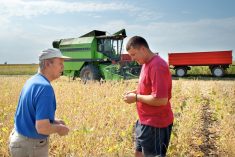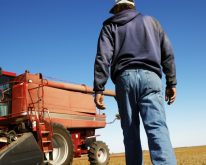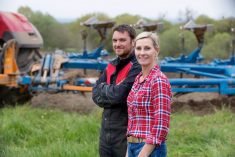Can leadership skills impact your farm’s bottom line? Find out how this business x-factor can be developed to give your farm a competitive advantage.
– April Stewart, CG Associate Editor
Leadership is the overlooked skill set that can explain why some farms move forward and grow, overcoming difficult periods to successfully transition from one generation to the next. It can also explain why some others don’t.
Read Also

Youth focused on keeping Quebec’s dairy industry strong
In part two of our Making the Future series, Country Guide spoke with Béatrice Neveu from Rawdon, Que. (Read part…
In recent decades, research into the fields of leadership, adult development and neuro-science have been converging. We now know that leadership can be developed at any age. When it comes to leader development, neuroplasticity is a six-syllable word for potential (I love big words).
We also know that leadership can be developed and that it can become a competitive advantage for your business.
According to a study of business performance and leader effectiveness, 37.6 per cent of the variation in business performance can be attributed to leadership. As leader effectiveness increases, so does business performance.
Small business has yet to tap into leadership as competitive advantage. How many farmers do you know who have been through a modern, science-based leader development program?
Leadership is the hard business of masterfully executing soft skills — skills that consistently develop and get the best out of others. Leadership solves complex problems by leveraging the collective expertise of our advisers without relinquishing control, and then enables us to make a bold decision without unanimous support.
Leadership means we get more of the things that matter done with better results. Its skills empower us to wade into difficult conversations with those most important to us, and to firmly stand our ground while staying curious because we know how. Leadership also means we know our own mind, and its skills make business plans a reality, again and again, in good times and especially in the tough ones.
As a kid, I was fascinated by leadership on the playground. How could a particular older kid achieve good results with his teams, a different one each recess, consistently? I was hooked, but it was a mystery to me. Half a life later, and I’ve decided to take my childhood fascination and all the leadership experiences and education in between, and support small- and medium-sized business leaders who struggle to access professional leader development, but need it just as much.
Leadership has existed since humans worked collectively to increase their survival odds but has only been formally studied over the last half-century. Today, what makes leaders effective is well known and can be accurately measured — you can have your leadership assessed and compared to a data base of leaders, by those who know your leadership best — those you lead.
I’ve heard effective leadership explained away as luck (which has been shown to be a significant and overlooked factor), a smart move (but how does it happen over and over), or strong management (which explains the smart moves, but how are these leaders consistently able to execute so well everywhere, all the time).
Leadership is an X-factor, an awesome sauce that can be applied to every aspect of your business and make it better. In that way leadership is soft, allowing capable leaders to make an impact everywhere because they positively influence at every encounter with a residual effect. It’s as if they’re everywhere in their business all the time, except some weeks they aren’t there at all, and smart decisions continue to be made. Leadership produces effectiveness in others and has nothing to do with good cell reception.
Over the coming issues, I want to share what research says about which leadership competencies are most strongly correlated to leader effectiveness, and what reactive tendencies kill leader effectiveness. Reactive tendencies are the behaviours we express everyday and that we adopted out of our childhood. They have served us reasonably well as adults. The problem with these behaviours is that they are an unsustainable way of leading and can be overused.
Like a narrow chemical rotation, overdoing a reactive tendency can have negative consequences, and without you realizing, turn a reasonable approach into a crippling life and business-limiting defect. It’s a limitation that can explain why some farm businesses fail to thrive and transition. Even if these reactive tendencies are kept in check, this level of leadership is insufficient today, and will be in the future what discers or the double-disc press drill are to seeding today. Just as seeding technology has a future, so does leader development — collaborative, differentiated, appreciative, and connected.
What does it take to build leadership to the point you can feel it and see it on the bottom line? I will share what professional leader development really is. I will also make my best arguments that developing your leadership is really the only answer we have to succeeding in VUCA world (Volatile, Uncertain, Chaotic and Ambiguous — i.e. farming) where our default desire is for an SCSC existence (Stable, Certain, Simple and Clear).
I believe that in our industry, where so many enterprises are undergoing generational transition, leadership is the overlooked factor that allows one generation to confidently step back, and another to step up. It’s also what makes choosing the right technical solutions for transition far smoother. What does each leader want and need from the plan? Can each of them describe it so everyone clearly understands?
Enter Leadership. Stay tuned.
– This article was originally published in the October 2018 issue of Country Guide. Kelly Dobson is president of LeaderShift Inc. where he supports and develops leaders of small- and medium-sized firms through coaching, leader development and advising. Kelly is a fourth-generation farmer at Fairfax, Man. You may contact Kelly at [email protected]. Note: LeaderShift will be attending the Ag Excellence Conference in Winnipeg this November.















